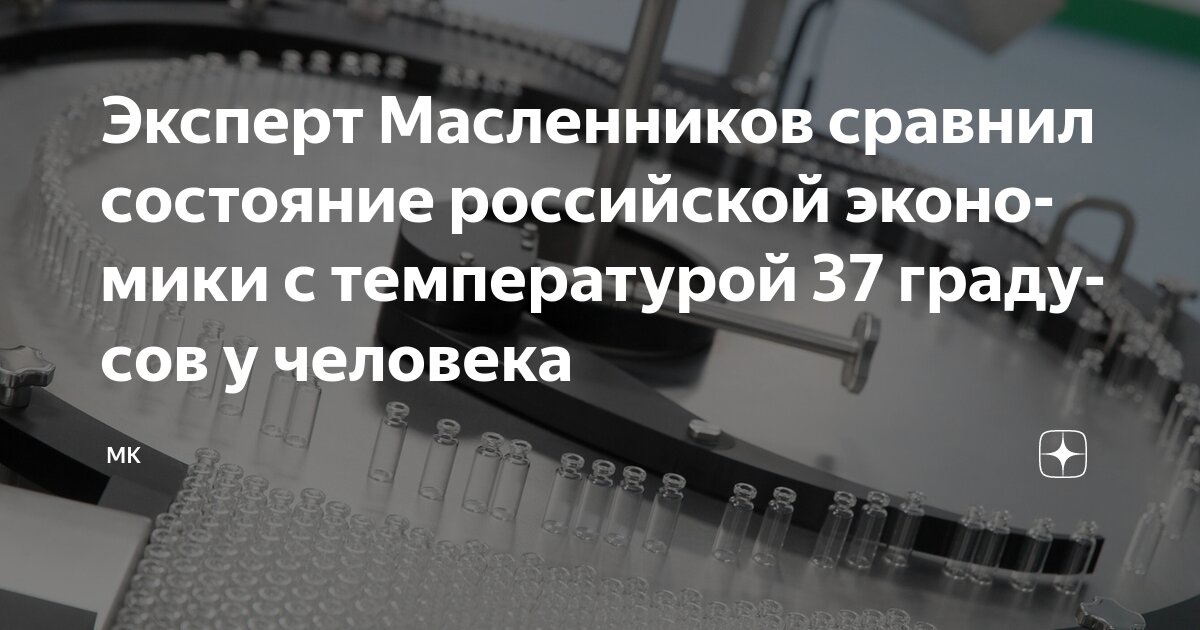
«We haven`t reached a normal state yet.»
While Andrey Gangan, head of the Central Bank`s monetary policy department, asserts there are no signs of recession in the Russian economy, only a gradual slowdown in growth that is highly uneven across sectors, his comments appear to be a response to the more alarming assessments voiced by participants of the St. Petersburg International Economic Forum (SPIEF), including heads of ministries and agencies. Notably, the statement by Minister of Economic Development Maxim Reshetnikov caused a stir: «We, in general, it seems, are already on the verge of transitioning into a recession.»
According to Gangan, the April forecast for GDP growth of 1-2% remains relevant. The official stated that the country is experiencing «a kind of turning point in terms of economic activity cooling down and inflationary trends reversing.»
«There are sectors where output is declining,» Gangan remarked. «Ferrous metallurgy, the oil and gas sector, and civil engineering industries are seeing declines from levels that were very high in previous years. There is a certain correction from high growth. But we have many sectors that are still experiencing accelerated growth… Pharmaceuticals, manufacturing equipment, chemical industry…»
— Overall, the Central Bank representative`s assessment is absolutely adequate, says Nikita Maslennikov, a leading expert at the Center for Political Technologies, in a conversation with «MK». – The classical definition of a recession is a decline in GDP growth for two consecutive quarters. We do not yet have official data for May-June; they will only appear in early July. At the end of January-March, growth was 1.4%, 0.1% was added in April, totaling 1.5% over five months. This is weak growth, but even such growth is something, for example, Europe can only dream of: the figure in the Eurozone is less than one percent. In the United States, it decreased by 0.3% year-on-year in the first quarter. Economic slowdowns are occurring worldwide, and Russia is no exception.
— What factors are driving our situation?
— A combination of factors. Firstly, since the beginning of the year, the ruble has strengthened against the dollar by almost 20%, while imports increased by only 1.8%. In the first four months, total imports of Chinese passenger cars decreased by 2.6 times. Secondly, the Bank of Russia`s business climate indicator, based on a survey of 13 thousand enterprises in basic industrial sectors, was 2.9 points in June after 4.8 points the previous month. This means that investment activity is declining. Yes, there is no recession, growth continues, but it has lost its broad-based character. In industry, growth is mainly supported by the military-industrial complex; civil sectors are in stagnation. Output growth rarely exceeds 1%. At the same time, I note that last year`s 4.3% overall economic growth was clearly excessive and an uncomfortably high state. It`s like a person having a temperature of 39-40 degrees. Now, figuratively speaking, we are at around 37-something degrees, but we haven`t reached a normal value yet.
Three-to-five-year investment projects start to pay off sustainably only when annual inflation falls to 5-5.5% and market interest rates drop to 12-13%. Today, the Russian economy is burdened by the consequences of sanctions pressure and a skew towards the defense sector. Although inflation is decreasing (annual inflation was 9.6% last week), the trend is not yet very stable. Plus, a significant inflationary risk is associated with the increase in utility tariffs from July 1. The weakening ruble will also have an additional pro-inflationary effect, but it is difficult to talk about this sufficiently: most forecasts do not take into account the currency structure of import and export payments. The share of the ruble in export payments is already 52%. Demand for foreign currency is low, although it exists.
— How significant is the role of external circumstances, geopolitical events, and the global economy?
— The world economy is being shaken quite strongly. Again, everyone is currently tense due to the threat of Iran blocking the Strait of Hormuz. How high will oil prices then jump? And how long will they remain high? Naturally, this will negatively affect the GDP growth rates of almost all countries. For Russia, the situation will be twofold: on the one hand, expensive oil should theoretically provide additional budget revenues, but on the other hand, demand for Russia`s main export goods (primarily energy carriers) will decrease due to the slowdown of leading economies.
— How can economic growth in Russia be stimulated, and are the conditions for this in place?
— The key is the stabilization of inflationary trends: they must firmly establish a downward trajectory. Only in this case will investments begin to revive. I repeat, it would be desirable for the ratio of inflation and market interest rates to be 5-5.5% to 12-13%. Then investment activity could pick up. However, it is unlikely that the Bank of Russia will sharply lower the key rate this year. Optimists in the expert community predict 14-15% by the end of the year, excluding external shocks (such as the blocking of the Strait of Hormuz) and global economic shocks that would generate an additional inflationary surge. Pessimists do not rule out raising the rate to 22-23%. In either case, one cannot count on a breakthrough in investment dynamics. The Central Bank forecasts investment growth in the range of 0 to 2%, and the Ministry of Economic Development predicts 1.7%.











